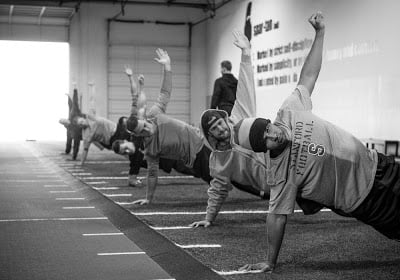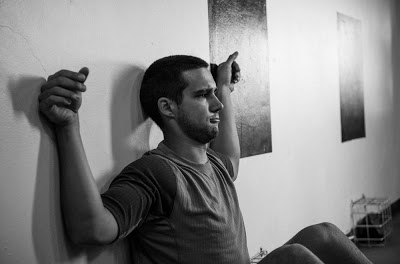
The greatest predictor of any injury is actually the same, regardless of the sport, gender, or location. It is the recurrence rate, the probability that such an injury occurs again.
Perhaps the best example is a shoulder dislocation, which has an overall recurrence rate of 50%, up to 88.9% if you are less than 20 years old!

Always start with the first question of an injury; is it acute or chronic. An athlete with a shoulder dislocation will recall a specific event, making it acute.
A shoulder dislocation occurs when the major upper arm bone, the humerus, separates from the shoulder blade, the scapula, at the glenohumeral joint shown to the right. A partial or incomplete dislocation is called a subluxation.
The majority of these types of instability occur anteriorly, with the humeral head moving towards the front of the body. However, the approach, and the predictors, are the same.

The most common situation is a young, male athlete involved in a contact sport like football, wresting, or hockey. The mechanism generally is an abducted, externally rotated arm, similar to the picture above.
Pressure is placed on the outstretched arm in this position, such as contact with an opposing player, falling, or finishing a throw or rotational swing.
Such mechanisms explain the higher risk in younger athletes, as these individuals tend to be more flexible. Such excessive flexibility is linked to all ligamentous injuries, even ACLs. A younger age and ligamentous laxity are both linked to shoulder dislocations, as well as their subsequent recurrence rate.
Strength – Since it is an acute injury, we need to avoid any further stretch (eccentric stress) and load the joint concentrically or isometrically. Encouraging the humeral head to sit more in the center of the joint can also reduce the risk of recurrence so we use the underhand bent row.
Skill – Acute calls for stability. Because most of these events occur in movement; dynamic stability and timing is the key focus. We use the body blade due to its superiority in teaching the neuromuscular system the rapid onset and offset of tension.
Regen – The most overactive muscles are the pectorals. These internal rotators not only place the shoulder anteriorly for a greater risk of instability, but also become more overactive as a protective mechanism to avoid any further abduction or external rotation. To reduce such excessive fascial tension, we use a lacrosse ball on this area.
With a recurrence rate of at least 50%, the most important part is prevention, especially if you have been injured in the past or are at higher risk because you are young and flexible.
I guess getting old is not always so bad.